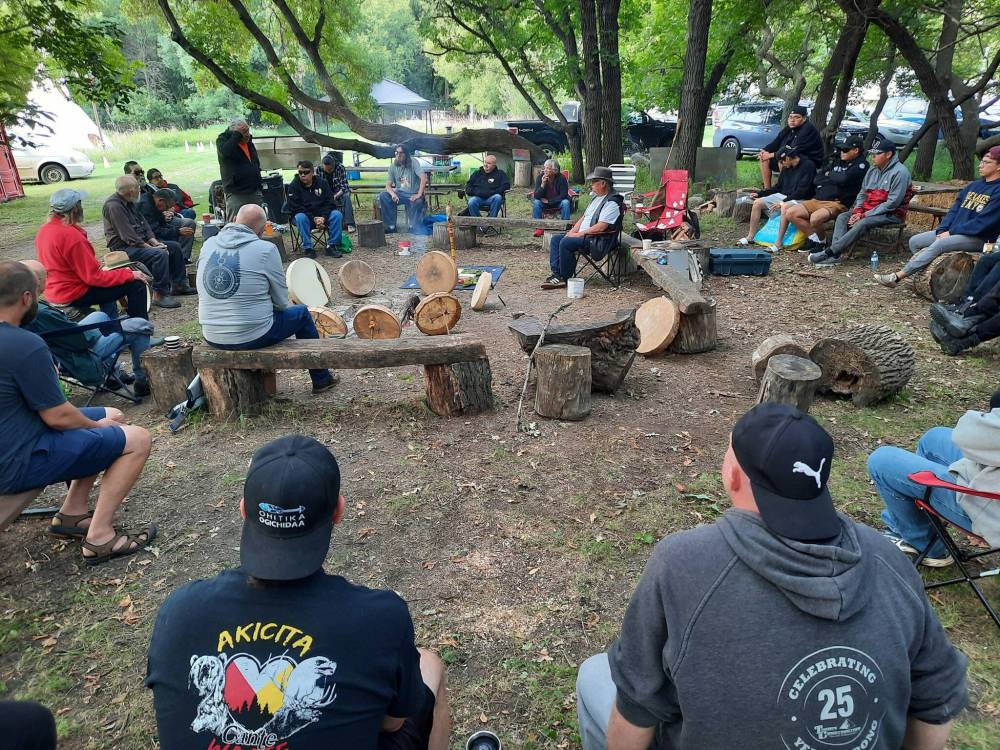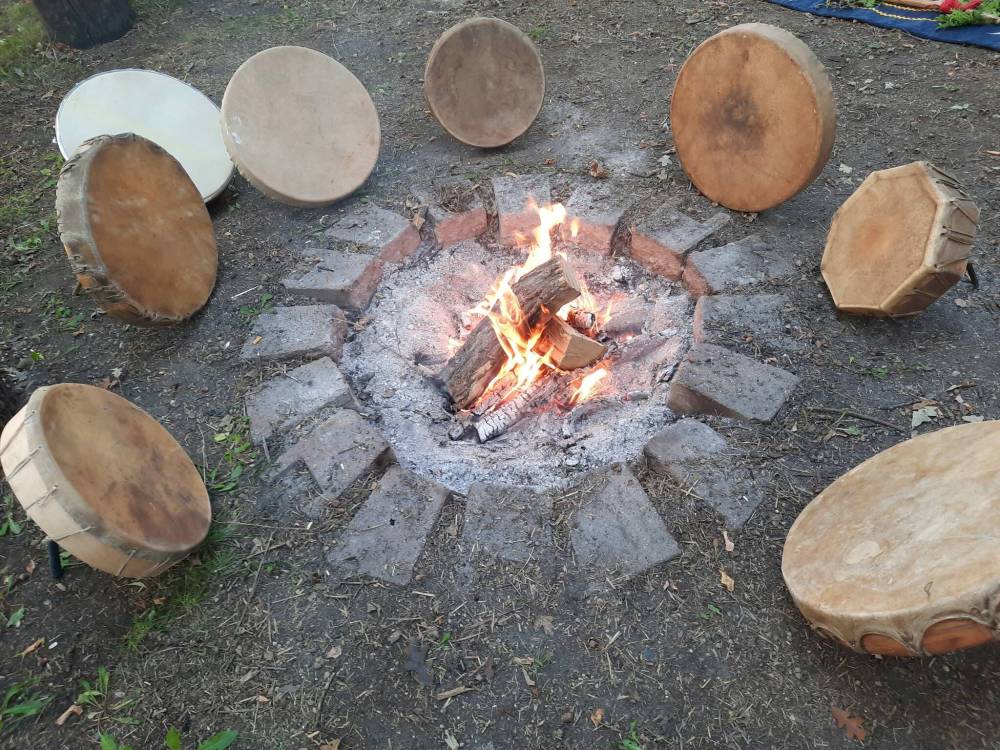Drumbeat of rebuilding Indigenous men
Advertisement
Read this article for free:
or
Already have an account? Log in here »
To continue reading, please subscribe:
Monthly Digital Subscription
$0 for the first 4 weeks*
- Enjoy unlimited reading on winnipegfreepress.com
- Read the E-Edition, our digital replica newspaper
- Access News Break, our award-winning app
- Play interactive puzzles
*No charge for 4 weeks then price increases to the regular rate of $19.00 plus GST every four weeks. Offer available to new and qualified returning subscribers only. Cancel any time.
Monthly Digital Subscription
$4.75/week*
- Enjoy unlimited reading on winnipegfreepress.com
- Read the E-Edition, our digital replica newspaper
- Access News Break, our award-winning app
- Play interactive puzzles
*Billed as $19 plus GST every four weeks. Cancel any time.
To continue reading, please subscribe:
Add Free Press access to your Brandon Sun subscription for only an additional
$1 for the first 4 weeks*
*Your next subscription payment will increase by $1.00 and you will be charged $16.99 plus GST for four weeks. After four weeks, your payment will increase to $23.99 plus GST every four weeks.
Read unlimited articles for free today:
or
Already have an account? Log in here »
Hey there, time traveller!
This article was published 29/08/2023 (824 days ago), so information in it may no longer be current.
The secret of a hand drum is in its tying. A good drum starts with the hide.
Elders say the texture and tightness in an animal’s skin — whether it be elk, deer, moose or other — is not just due to its diet and environment but how it was harvested.
If hunted, killed and skinned disrespectfully, the hide will be tough and difficult to tie, taking a long time to soften and stretch. When finished, the drum will often re-stiffen and sound loose when played, resonating with an empty sound.

Jason Gobeil photo
On Aug. 26, Jason Gobeil co-ordinated the 100 men with 100 drums event at the Assiniboine Food Forest on the outskirts of Brandon.
These drums can be played, of course, but must be heated constantly by a fire or oven to create a rich sound. Once they cool, the drum is back to being almost unplayable.
If a hide is respected and honoured, on the other hand, it will wrap around the wood frame almost on its own. With some patience, care and consideration, the hide will tie tight and strong and, when completed, boom with a beautiful, full sound.
The double beat of a hand drum resembles the heartbeat a baby hears while growing in the womb. This is why these drums are sacred — and everything surrounding them must be, too.
“That’s precisely what we are trying to remind our brothers about,” Jason Gobeil says. “Indigenous men have forgotten they are sacred and must act that way.”
On Aug. 26, Gobeil co-ordinated the 100 men with 100 drums event at the Assiniboine Food Forest on the outskirts of Brandon. The event was designed to help support and build a community of healthy Indigenous men through cultural sharing and activities.
Featuring elders, speakers and food, the main event of the day was the tying of drums by each participant — with materials donated by the Brandon Friendship Centre.
In fact, almost everything for the day was donated.
“There is no government granting agency for an event like this,” Gobeil explains. “Programs that create healthy Indigenous men don’t get much interest in this country or province.”
It’s true. While most social agencies and programs focus (rightly) on Indigenous women, children, two-spirit people and seniors, Indigenous men often get overlooked.
At the same time, and in comparison to virtually anyone in Canada, Indigenous men have some of worst health rates, shortest lifespans, highest incarceration rates, are less likely to graduate high school, and are killed at an astronomical rate.
For instance, in a recent study of homicides in Canada between 1980-2012, 2,500 were Indigenous victims, with 1,750 of them being male.
Amongst the 500 Indigenous-victim homicides in Manitoba in that same study, 355 were Indigenous men.
“Our brothers experience very specific forms of abuse, violence and trauma, and there are almost no healthy places to share, talk and heal from it,” Gobeil says. “We need safe spaces to reflect, recover and take our place in our communities.”
After 60 participants tied their drums and laid them to dry near the fire, a sharing circle took place, where men from Dauphin, Souris, Brandon and Winnipeg joined with men from far off communities such as Rolling River, Waywayseecappo, Pine Creek and Peguis.
They shared stories about what it means to be a healthy father, uncle, brother, and son.

Jason Gobeil photo
After 60 participants tied their drums and laid them to dry near the fire, a sharing circle took place, where the men shared stories about what it means to be a healthy father, uncle, brother, and son.
“There was a lot of laughter and tears, but so much love,” Gobeil says. “We had a lot of men here who have spent years in silence, often hurting themselves and others because of all the pain they carry. In one afternoon, they shared and lifted each other up.”
Gobeil is part of a handful of grassroots Indigenous leaders across the country trying to build mentorship and support networks for Indigenous men to become healthy partners, fathers and individuals.
“It starts with love,” he says. “This is where the drums come in.”
After the sharing circle, the group shared songs from their cultures and communities. By the end of the event, each participant walked away with a new relation and a sacred new drum — a symbol of what they can offer to families and communities.
“We had a few non-Indigenous brothers join us, too,” Gobeil says. “Everyone left with new songs, stories and the knowledge they are not alone.”
It’s easy to blame Indigenous men for many ills facing their communities. Some statistics might even support this idea.
The fact is though violence, drug abuse and poverty in Indigenous communities won’t be solved by leaving Indigenous men behind.
Helping Indigenous men rebuild themselves might just be one of the most important solutions of all.
A solution that begins with healthy spaces forged out of kindness, generosity, respect and patience — essential elements necessary for a full, clear and beautiful sound to emerge.
The secret of a hand drum is in its tying.
niigaan.sinclair@freepress.mb.ca

Niigaan Sinclair is Anishinaabe and is a columnist at the Winnipeg Free Press.
Our newsroom depends on a growing audience of readers to power our journalism. If you are not a paid reader, please consider becoming a subscriber.
Our newsroom depends on its audience of readers to power our journalism. Thank you for your support.

